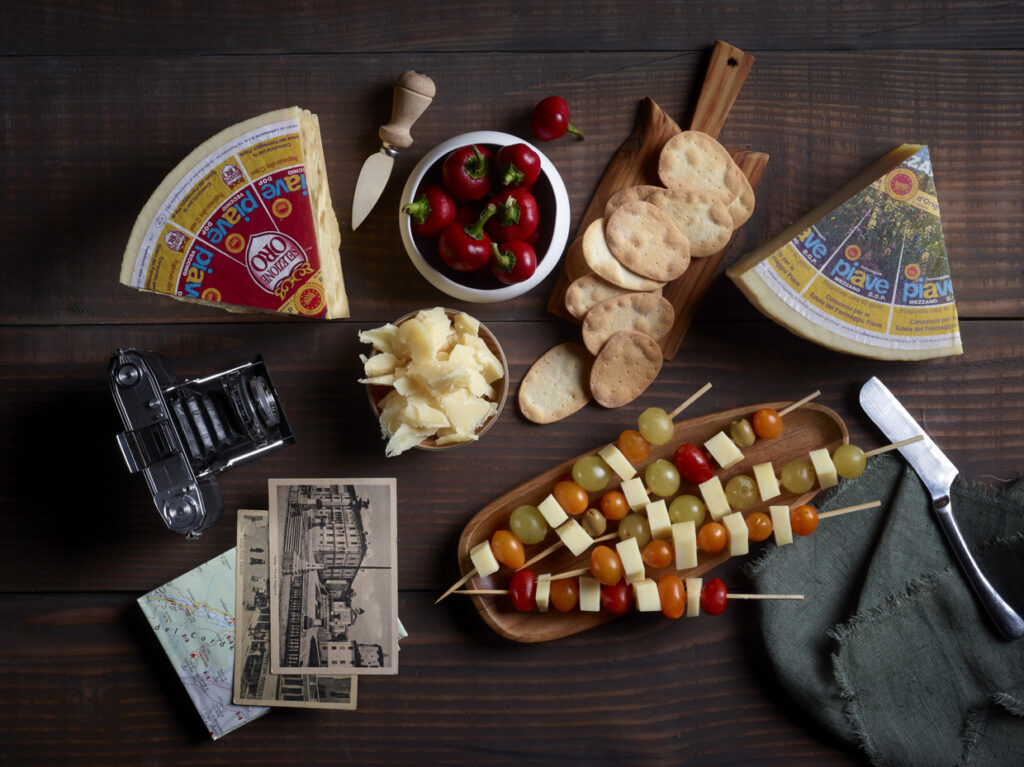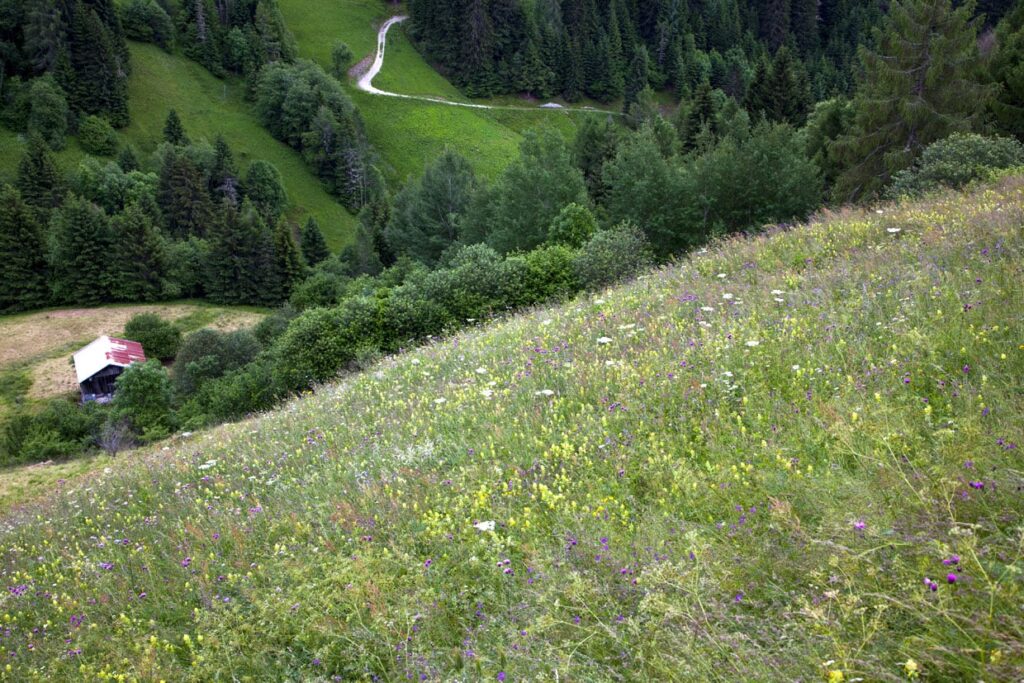Cultural heritage
Piave DOP cheese is an expression of the area where it is made and takes a rich environmental and culinary heritage to the more than 30 countries where it is exported.
It is in the woods, meadows and pastures of the Belluno mountains that the production of Piave DOP cheese begins. The meadows are often turned into pastureland by the farmers themselves, who work to restore the variety of grasses, which are sometimes reduced by climate changes. Together with the meadows, which produce much of the hay, the pastures are essential elements of this environment and offer the possibility of mountain grazing in summer. The aim is twofold: to have an excellent product from a nutritional point of view and to protect the land from uncontrolled forest expansion, neglect and abandonment. There is a strong conviction that projects with a future, with new generations in mind, can only be created in an unspoiled and well-kept environment.
From a dietary point of view, Piave DOP cheese is an excellent candidate for the Mediterranean Diet, a nutritional model recognised by UNESCO as world heritage and indicated by the FAO (United Nations Food and Agriculture Organisation) as one of the most sustainable on the planet. The Mediterranean Diet model includes a number of essential characteristics, such as authenticity of the ingredients, traditional production techniques and the link with the territory, elements that have always distinguished Piave DOP.
Prato polifita a Costalta, San Pietro di Cadore Pascolo in Alta Val Comelico

A product of the Belluno Dolomites, Piave DOP cheese owes its origins to the tradition, experience and the age-old ‘know-how’ of the local cheesemakers, who used to process milk supplied by smallholders in the “kasèi”, i.e., the “turnaria” dairies, which were set up in the 19th century in a mountain village above Belluno and soon spread to all the towns, large and small, throughout the province.
Piave cheese is the expression of a long history of cooperation in the Belluno area, where local businesses, together with other structures such as the “malghe” (herder’s shelters), are now a vehicle for transmitting the ancient rules of the cheese-making art, respectfully applied in the production of typical cheeses, as well as production facilities whose importance in socio-economic terms is beyond question.


